We’ve already covered the best watches under $500 and under $1,000, where value is obvious and expectations are grounded. But over $1000 and under $2,000, things get hazier. Are you paying for refinement or just branding? After nearly a decade of hands-on reviews, we’ve seen how real upgrades do emerge at this tier, but only in the right pieces.

The watches we’re highlighting below earn their price not merely on hype or prestige, but through strong engineering tolerances, an excellently executed design vision, and movements that hold time without babysitting. If you’re spending more, it better wear like the upgrade it’s priced to be. Please let us know in the comments below if you think there are models missing from this list and we’ll try to review them.
CWC Sea Falcon Chronograph
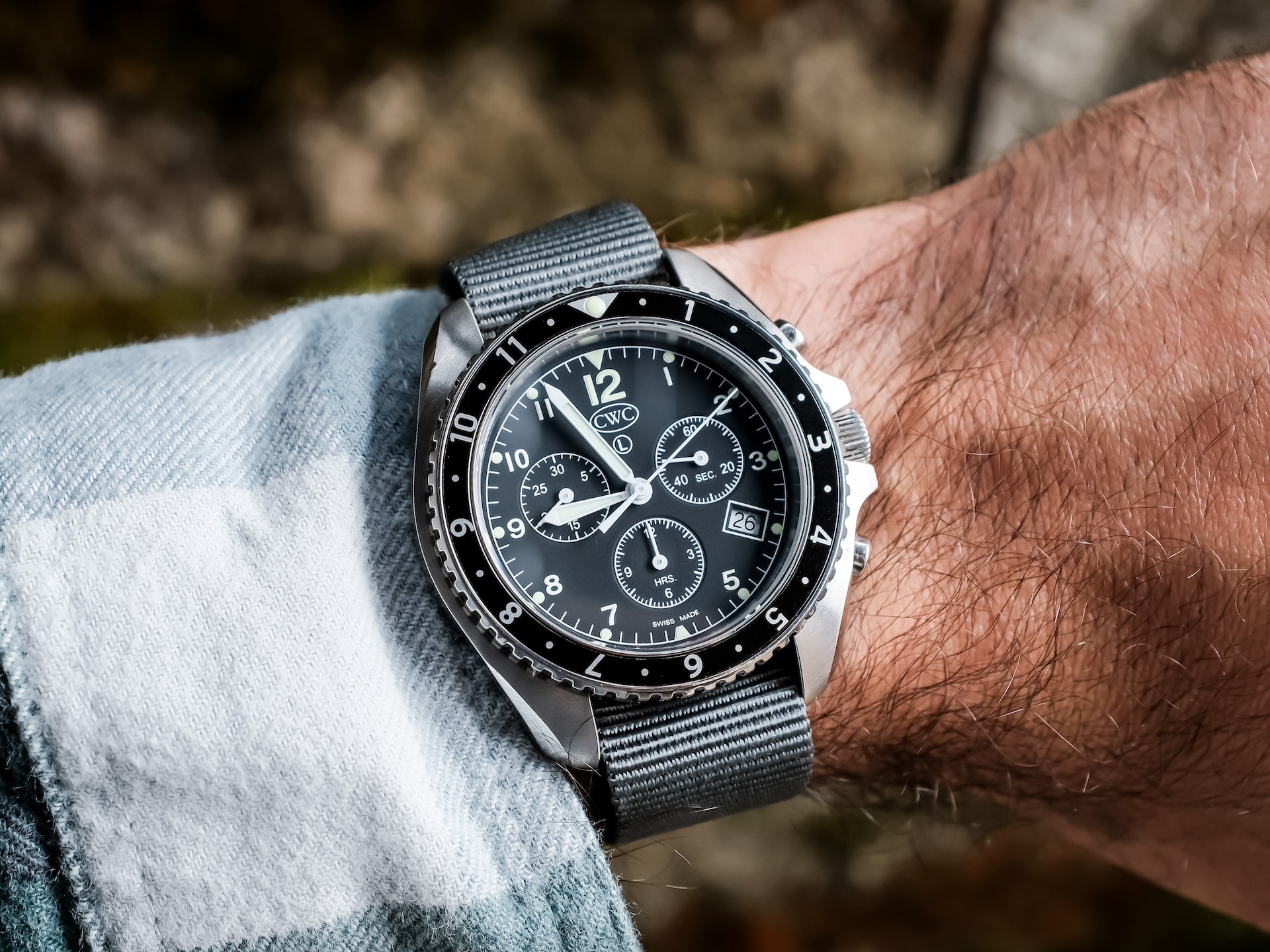
The Sea Falcon doesn’t pander to nostalgia, and that’s what makes it special. While most military-inspired quartz chronos try to recreate the past, CWC pushed forward with something rugged, functional, and surprisingly wearable. At 41mm across the case (45mm including the crown), this isn’t a subtle piece, but we found that during our hands-on testing, iit wears easier than you’d think thanks to its slim 11mm thickness. Fixed spring bars limit your strap choices, but we didn’t feel that was a flaw. Rather, it’s more of a commitment to security to reduce the potential likelihood of springbar failure if you’re wearing this timepiece in challenging environments.
The Ronda 5030 quartz movement inside isn’t an afterthought like you’d potentially see in other quartz chronographs. This jeweled, gold-plated quartz movement is top tier and delivers rock-solid chronograph reliability with a tactile button reset that we found to be worlds away from other less expensive movements. During testing we successfully used the 12-hour bezel for tracking a second timezone during travel. While the review team and I do wish the bezel was bi-directional for faster adjustments, it clicks confidently and lines up like it should without any alignment issues. Ultimately, It’s not a traditionally beautiful watch. It’s not trying to be. But for just over $1000, it’s a utilitarian-driven, daily-wearing, second-time-zone chrono with military lineage and real-world appeal. There are more personal insights and unique anecdotes in our full review.
Mido Ocean Star Tribute
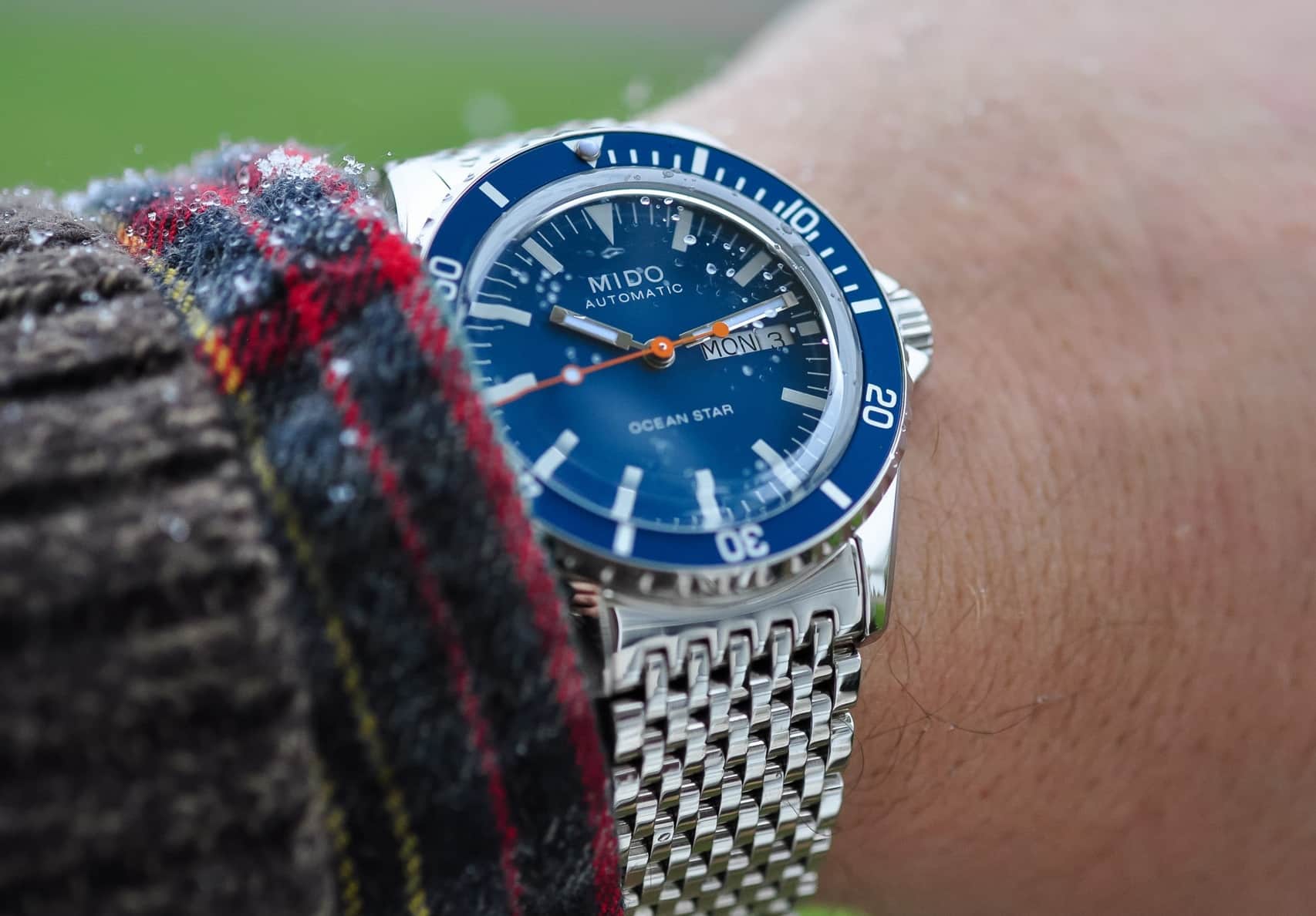
Mido’s Ocean Star Tribute is less about recreating history and more about channeling the confidence of an era that never worried about tool-watch purity. With a 40.5mm case, 13.5mm thickness, and 47mm lug-to-lug span, it finds that rare size balance where vintage styling doesn’t mean compromised fit, which we were very much impressed by while we tested in on wrist. The entire case is polished with no brushed surfaces and no subtle transitions. This might deter scratch-averse wearers but it reinforces the design’s throwback commitment. It’s paired with one of the most distinct bracelets in its category that we’ve ever reviewed: a multi-link polished chain that drapes like jewelry and moves with the kind of articulation most bracelets are unable to achieve.
Mido’s Caliber 80 automatic movement powers the watch and gives you a real 80-hour reserve. We were actually able to measure the accuracy on the particular model we reviewed at an impressive +2 seconds per day. Legibility is high in daylight, but we found the lume to be underwhelming since it was a bit faint and fast-fading in low-light. The bezel, while secure, lacks grip due to the full polish and shallow edges. Ultimately though this isn’t what we would classify as a tactical diver. For just under $1300, it’s the watch you wear when a leisure boat is more your vibe than anything else. You can read more about our testing experience with the watch in our full hands-on review.
Marathon TSAR

As soon as we kicked off our hands-on testing of the Marathon TSAR, we realized you don’t buy this watch because it’s pretty. For around $1300, you buy it because it’s overbuilt, over-tested, and doesn’t flinch in the face of real-world use. Originally made for Canadian SAR units, this 41mm quartz diver is slab-sided, 14mm thick, and topped with a sapphire crystal that dares you to try and scuff it. The 120-click bezel is glove-friendly with an aggressive grip pattern and precise action. The high-torque ETA F06 quartz movement ticks under the radar with serious accuracy. We measured it at an impressive +/-0.5 seconds per day.
You’ll find that the dial is brutally legible in person thanks to it’s high contrast dial as the application on tritium gas tubes (instead of traditional lume) that remain perpetually illuminated. While we felt that the bracelet is well built it lacks modern refinements like micro-adjustments and quick-change spring bars. Plus, we also tended to prefer the watch on Marathon’s rubber strap for lightness and comfort. This is not a subtle watch and it won’t ever pass as anything remotely resembling a casual watch, but it was never supposed to. There are more personal wearing experiences for this watch in our full hands-on review.
Archimede SportTaucher
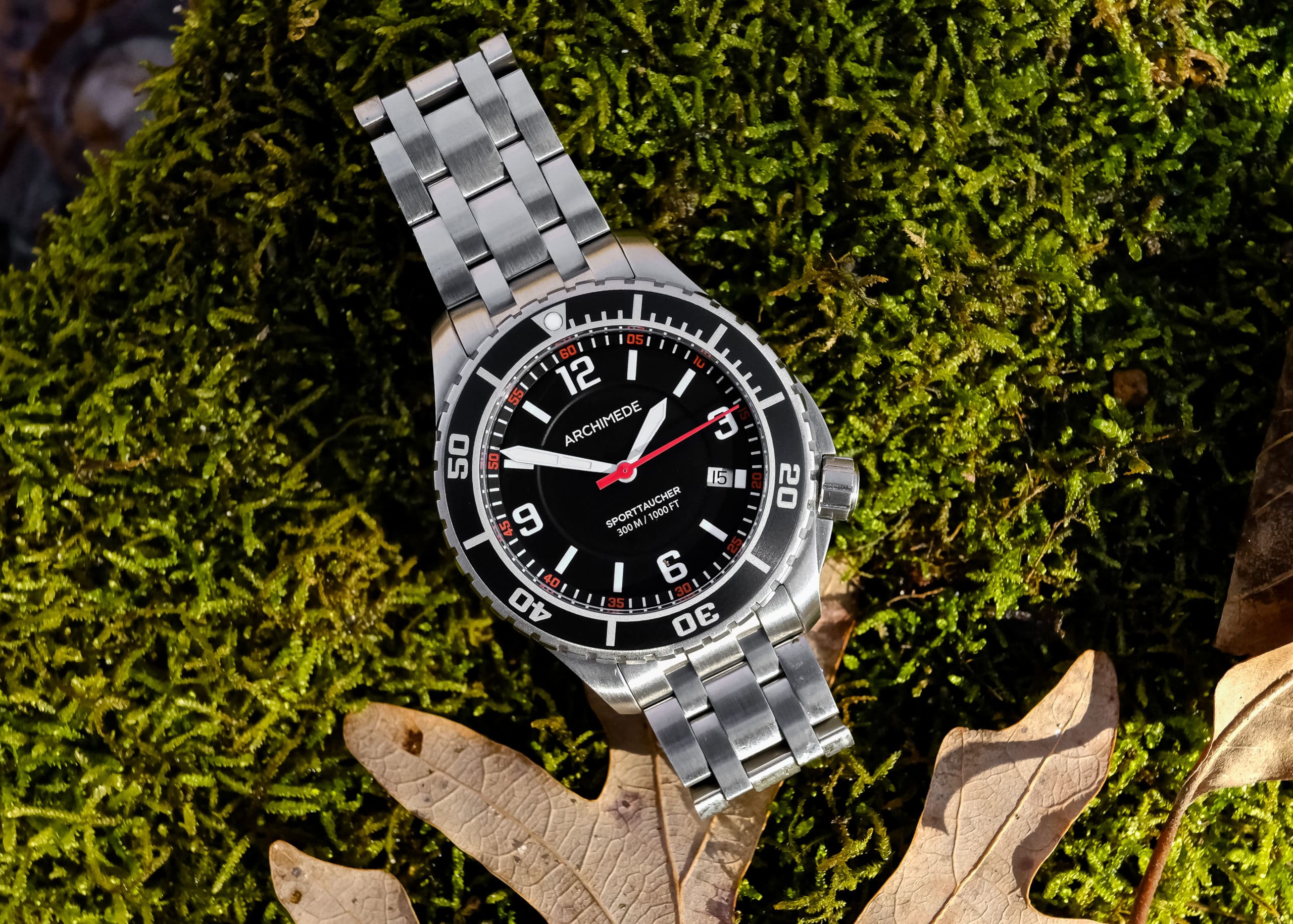
We loved how this one doesn’t try to blend in. The SportTaucher is for people who want a no-BS diver that skips the faux-patina and homage act. At 41.5mm wide and just under 50mm lug-to-lug, we found that it wore on the medium/heavier side on the wrist, but that’s not necessarily a downside since this is a dive watch that’s supposed to tough it out through anything you can throw at it. You’ll find that the CNC-milled case is thick, solid, and water-resistant to 300m, with clean crown guards that curve down and a screw-down crown at 4 o’clock that feels like it came off a submarine hatch.
Inside is a Sellita SW200-1 that runs within +5 to +10 seconds/day and powers lumed sword hands that stay legible till morning. While the bezel action is quite solid, we did experience some wobble and backplay when setting it, which could potentially impact whatever you’re timing if you bump the bezel against a door jamb or something. Plus, the insert is aluminum and not ceramic for those that have a preference for the latter. However, the five-link bracelet makes up for any shortfalls by featuring a beefy build while also being comfortable. We also found the diver’s extension to work quite well while on the wrist. This isn’t a crowd pleaser. Priced just around $1300, it’s a watch for people who like their gear overbuilt and their wrists to also feel that heft behind the build. We have more unique insights and experiences to share in our full hands-on review.
Archimede Outdoor Protect
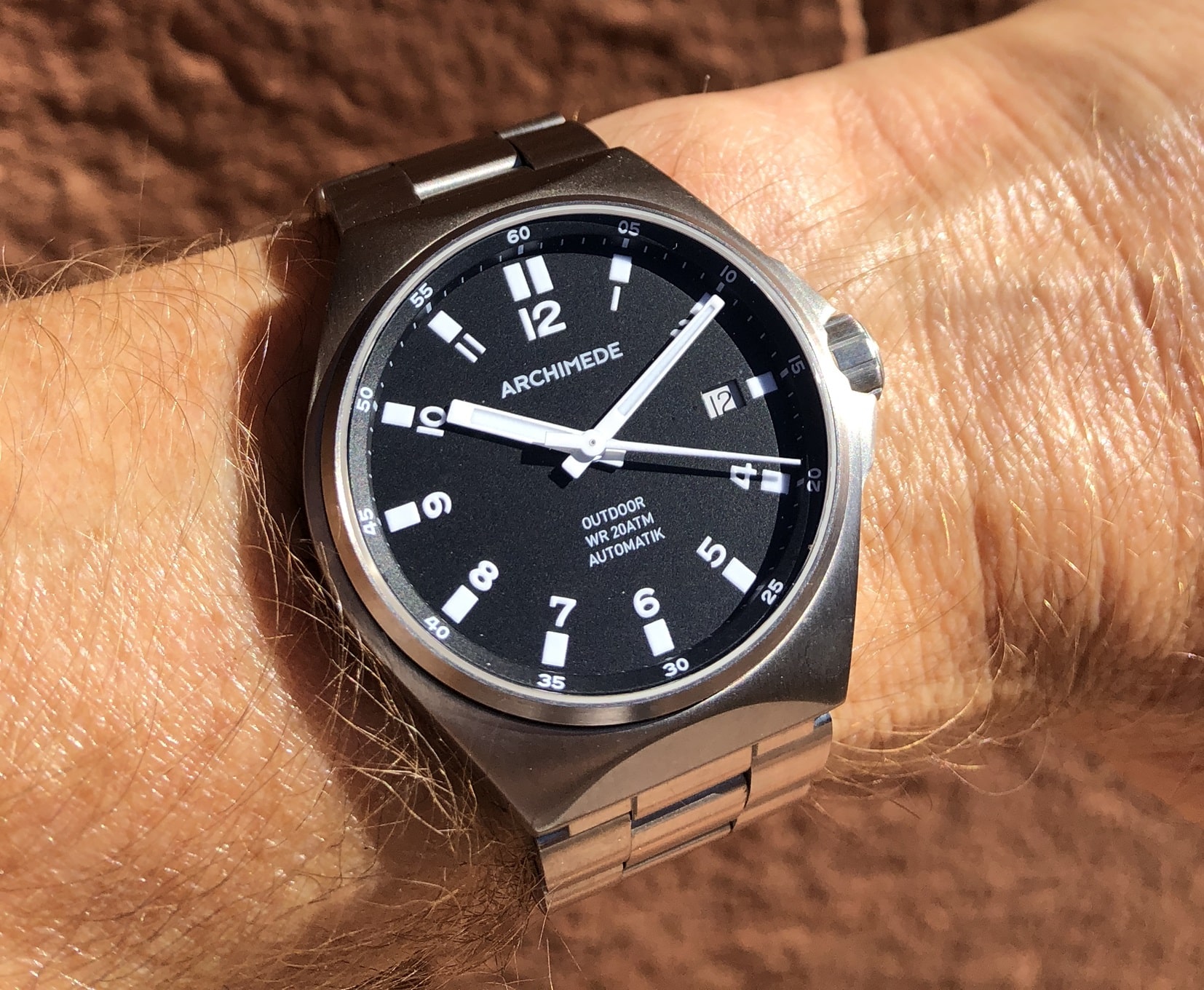
Don’t let the small-ish size fool you. The Outdoor Protect is one of the toughest automatic watches you’ll find for around $1300, full stop. It’s built around a hardened stainless steel case that resists surface wear far beyond what most other steel allows. Measuring 38.5mm in diameter, 11.5mm thick, and 43.5mm lug-to-lug, the case is barrel-shaped and lugless, which we found to make the watch very compact on the wrist during testing. Water resistance is 200 meters, achieved with a screw-down crown and sealed caseback, which is incredibly interesting and noteworthy since we would technically classify this as a field watch. Essentially, it’s the brand’s way of ensuring the watch can be ready for any type of challenging environment.
It’s hard to tell unless you’re looking at the watch in person but the case finishing is longitudinally brushed on all visible surfaces, including the crown guards, which are machined as part of the midcase and positioned to cover the crown without impeding grip. The dial is flat black with white printed numerals and markers that align cleanly with the seconds track, which made it really easy for us during testing to tell the time from quick glances on our wrist. We measured the Sellita SW200-1 automatic movement in three different positions over a week and found that it was impressively accurate at +6 seconds per day. Now the biggest downside here is that the lugless case design doesn’t allow for aftermarket straps. You either need to use the included bracelet or the rubber strap, both of which are great though. Our full hands-on review has more personal experiences and insights on the watch.
Longines HydroConquest
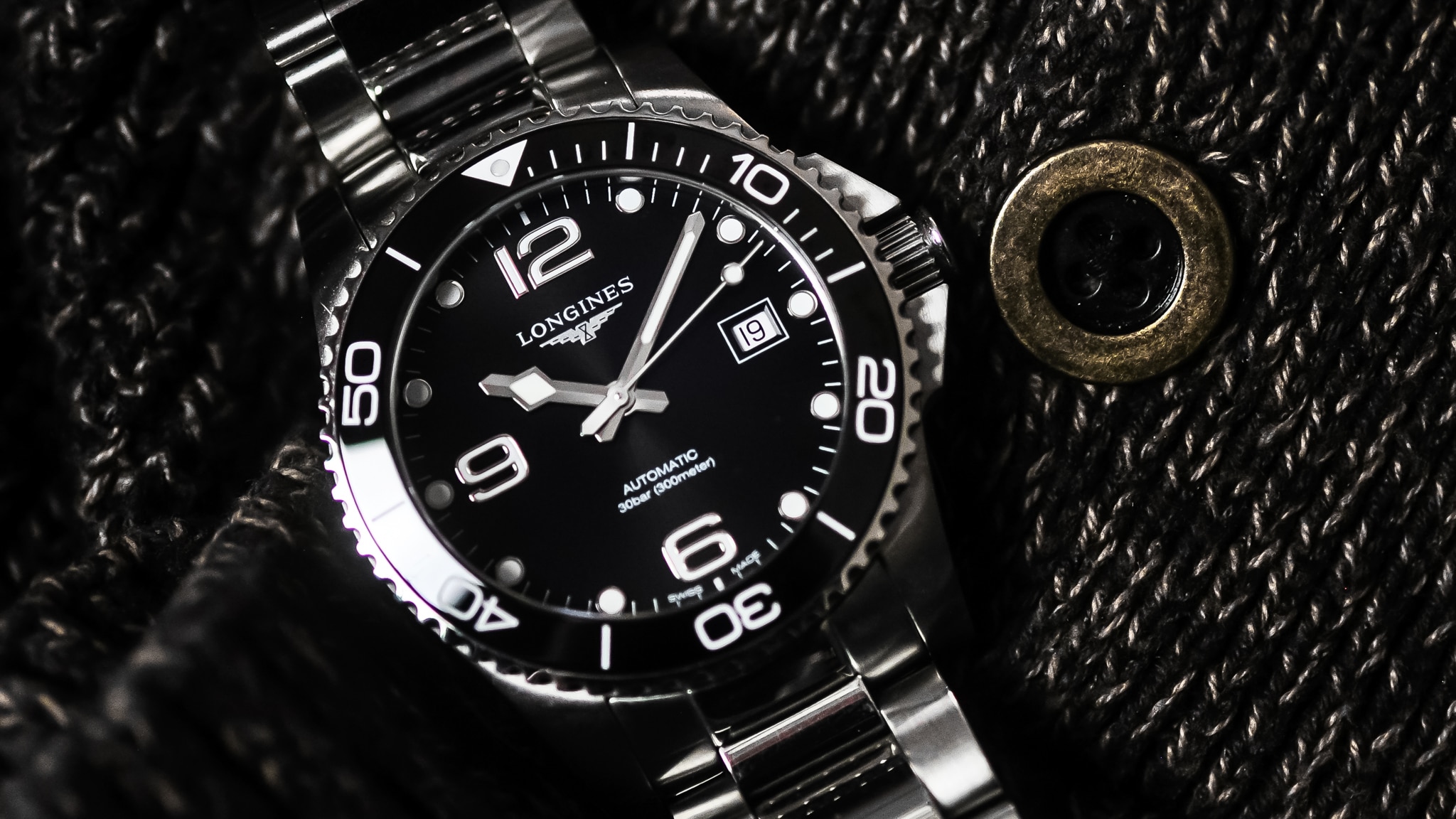
What we found interesting about the HydroConquest is that it flies very under the radar among other dive watches and they may be because it’s not trying to break the mold. It’s trying to nail the core essentials of a modern diver without overreaching. At 41mm across, 11.9mm thick, and with a 50mm lug span, we did find that it wears larger on the wrist than the dimensions on paper imply, but the low case profile and sharp lug curvature help it stay balanced. Gaining an edge on many other divers, it’s engineered to feature 300m of water resistance. But what impressed us the most during testing was the Longines L888.5 automatic movement. Built on a modified ETA base, it delivers a 72-hour reserve, 25,200 bph sweep, and (most importantly) a silicon balance spring that boosts anti-magnetic resistance and thermal stability.
We can also confidently say that the ceramic bezel resists scuffs from seatbelts, railings, and the usual everyday obstacles that end up hitting watches. Plus, the action on the bezel is very deliberate and tight with no play while also being easy to operate. Aside from the timepiece itself, our experience with the bracelet left a bit to be desired. It features polished center links which pick up scratches fast and the diver’s extension certainly functioned as intended but it just felt a bit unrefined when you engaged it. Plus, the bracelet features a 21mm lug width which can limit your strap options since it’s a non-traditional size. That said, the applied indices are crisp, the case finishing is very high quality, and the overall package for around $1400 meets or exceeds the build standards seen in more expensive Swiss divers. Feel free to explore our full hands-on review of this watch for more unique insights and photos.
Christopher Ward C65 Super Compressor

There’s playful retro, and then there’s the CW C65 Super Compressor. This is an actual revival of 1960s pressure-sealing tech that represents the brand’s ability to tout their own engineering prowess more than anything else. And we frankly love that, which is why we were excited to review the watch. At 41mm wide and 13mm thick, we found this skin diver to wear much slimmer than you would originally think thanks to the way the case contours on your wrist. Plus, there is some very beautiful light-play from the brushed and polished finishing, which you can only really appreciate in person with the watch on your wrist.
As a compressor, there are two crowns, one for time setting and the other for the internal unidirectional bezel. The bezel crown turns with incredible smoothness and doesn’t feel too flimsy like we’ve experienced on other dual crown divers. It features the ever-depending SW200 movement, which we’ve always found to be dependable and a great choice for watches in this price range. Plus, the overall legibility of the watch is very solid. The sunburst blue dial shimmers, and the orange accents bring 70s skin diver vibes without dipping into kitschy costume territory. For the price of around $1400, this watch is part conversation starter and part nostalgia hit, perfect for anyone who wants a high quality diver that’s also just visually fun and not run-of-the-mill. For more of our insights and personal experience with the watch, we have a full hands-on review.
Sinn 104
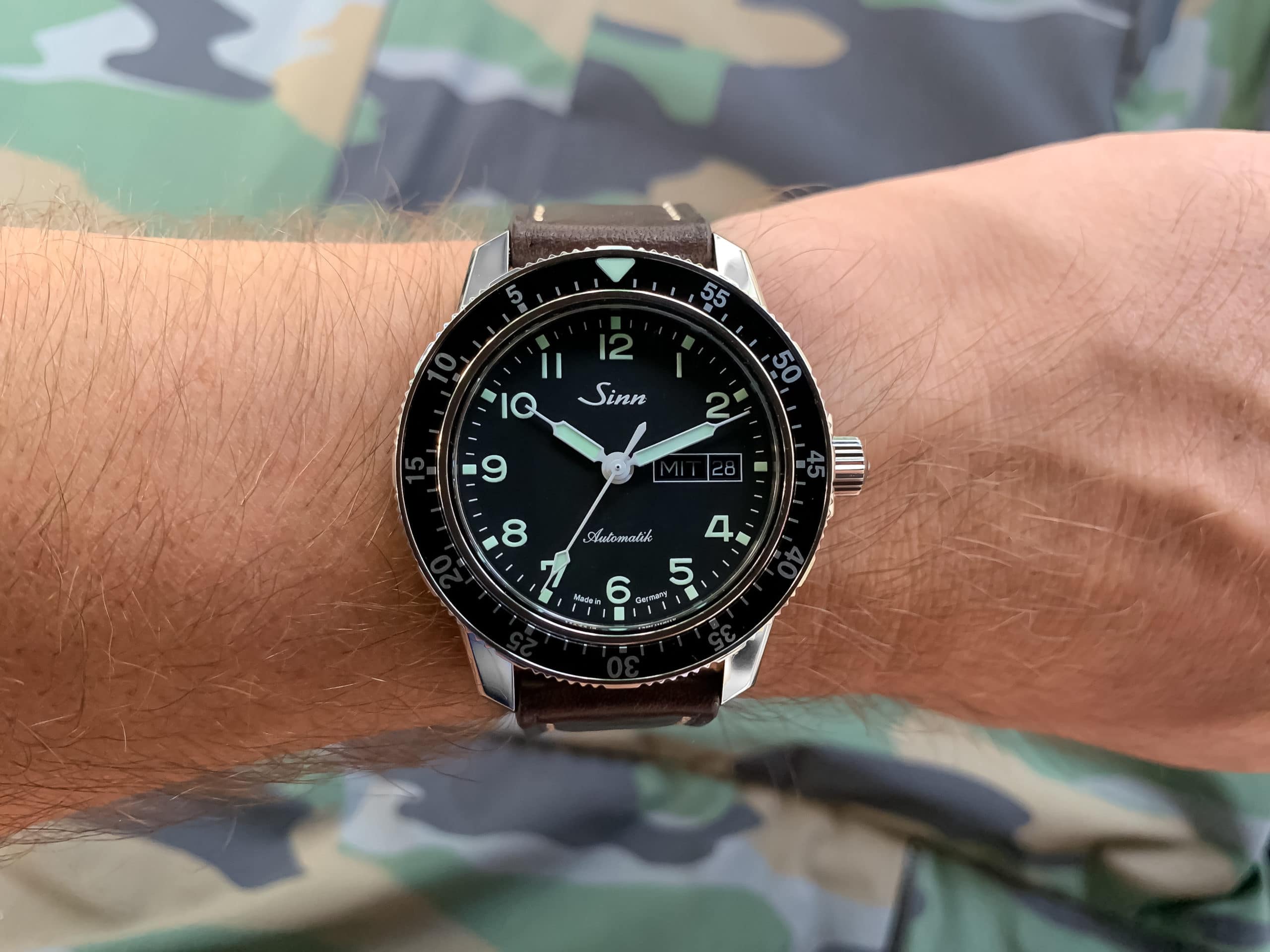
The Sinn 104 is the brand’s own version of a modern pilot watch that’s built around practical utility, not historical replication. Its 41mm case is fully polished which surprised us when we initially began our hands-on testing because most tool watches avoid flashy or shiny surfaces. But thanks to the compact proportions and clean case geometry, the watch successfully avoid being too flashy. However what we did enjoy though is that the polished surfaces did allow the watch to be dressed up, allowing it to be a great candidate for a versatile, everyday watch. The countdown bezel is bidirectional, mounted on a ball-bearing system, and offers firm, even tension throughout as you rotate it. During our testing we found the dial proved easy to read in all lighting conditions. The syringe-style hands and applied markers stand out sharply against the matte black background, and the boxed day-date window remains balanced without pulling focus.
We also found the provided leather strap to be a bit stiff out of the box, but it did break-in nicely within a day, so certainly do give it some time when you start wearing it. We did note that the leather strap could feel a bit bulky since it doesn’t feature a proper taper towards the end, but it’s a fair trade-off to make the watch feel more solid on wrist. Between all of our positive experiences reviewing the watch as well as the dependable SW220 automatic movement and the 200m of water resistance, the Sinn 104 is a strong contender for a one-watch collection without ever feeling like a compromise that’s priced at around $1700. We have more personal experiences and unique anecdotes to share about the watch in our full review.
Christopher Ward The Twelve 36mm in Titanium
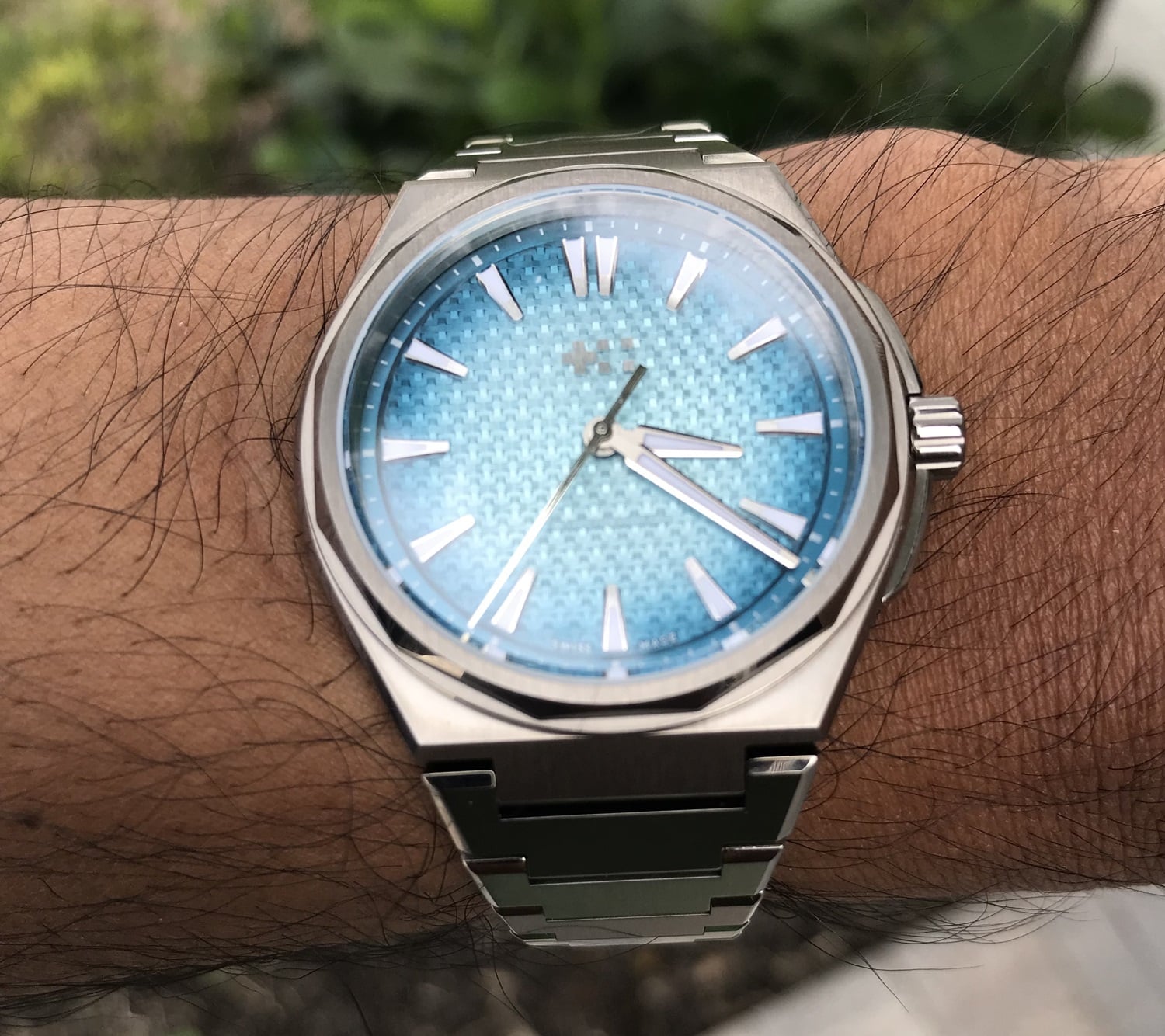
We frankly didn’t expect the 36mm version of the Twelve to wear as well as it did. Titanium kept the weight barely noticeable during testing, but the case still had excellent presence on wrist, mostly due to the case polishing, brushed surfaces, and how tightly the integrated bracelet framed the wrist. The glacier blue dial shifted tone beautifully depending on angle and light, but we found that this also caused the high polished hands to disappear and lose under bright glare, impacting legibility. However, any legibility issues that did exist were overshadowed simply by how fantastic this bracelet experience was. It adjusted easily with screw links and the butterfly clasp closed flush with no play.
Every link moved independently, which allowed it to sit with incredible comfort. Plus, instead of just anchoring the case, the bracelet seemed to balance it and keep the entire watch stable and centered on the wrist no matter the angle. Over time, it wore more like a cuff than a strap with none of the wrist shift you get from heavier, stainless steel integrated bracelet watches. Over five days, the COSC-certified Sellita SW300 ran consistently without needing reset, and the winding action was smooth with minimal resistance. If you’ve tried on integrated bracelet timepieces before and felt that they were too bulky or too top heavy or even that the engineering on the bracelet just wasn’t at the level it needed to be, I would encourage you to try The Twelve 36mm in titanium. For just under $1900, it is certainly worth it. Our full hands-on review has more testing insights for you to learn about.

Co-Founder and Senior Editor
Kaz has been collecting watches since 2015, but he’s been fascinated by product design, the Collector’s psychology, and brand marketing his whole life. While sharing the same strong fondness for all things horologically-affordable as Mike (his TBWS partner in crime), Kaz’s collection niche is also focused on vintage Soviet watches as well as watches that feature a unique, but well-designed quirk or visual hook.
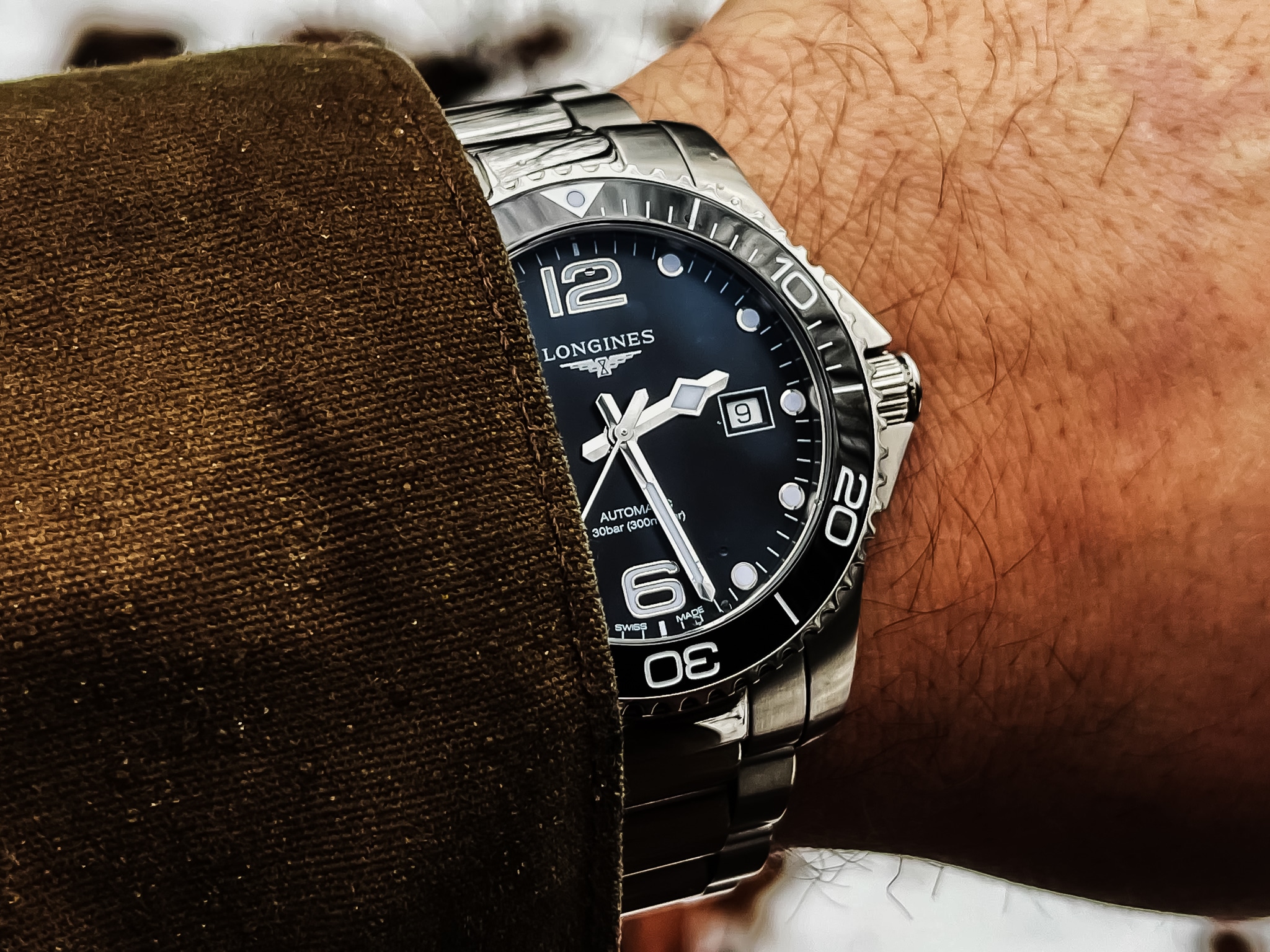
I was looking for Seiko King on this list. Deserves a spot
Ohhhhh good callout! We’ll check the latest King Seiko releases out and see if they’d be a good fit.
Thank you!
-Kaz